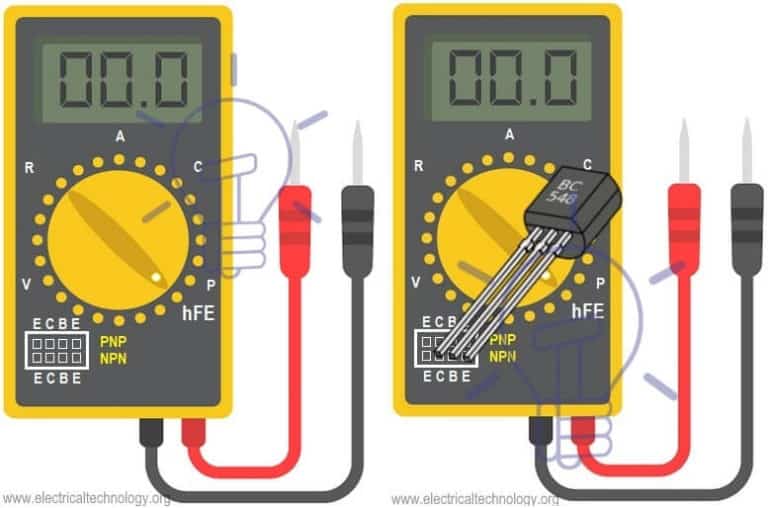How to Test a Transistor using Multimeter DMMAVO Circuit Diagram In this video tutorial we will guide you to learn how to check transistor is working or not using multimeterQuick Learning Guide for Multimeters: https://

Learn how to use a multimeter to test transistors for voltage drop, continuity, and faults. Follow the step-by-step instructions for NPN and PNP transistors, and understand why testing is important for electronics projects.

4 Ways to Test a Transistor Circuit Diagram
To test an NPN transistor, connect the multimeter's red probe to the transistor's base and the multimeter's black probe to the transistor's emitter. If the transistor is working properly, the multimeter should display a voltage drop of around 0.7 volts. To test a PNP transistor, connect the multimeter's black probe to the transistor's base and

In the same manner, we can test a PNP transistor too. Step by Step Testing of NPN Transistor. Set the digital multimeter to Diode or Continuity range. Connect the Positive probe (Red coloured) of multimeter to the base terminal of the transistor. Connect the negative or common probe (Black coloured) of multimeter to the emitter terminal. Testing a Transistor with a DMM. A digital multimeter can be used as a fast and simple way to check a transistor for open or shorted junctions. For this test, you can view the transistor as two diodes connected as shown in Below Figure for both npn and pnp transistors.

How to Test Transistor with Multimeter Circuit Diagram
Finding BASE of Transistor:. As mentioned in the above tutorial, the common number found in the tests above is base. In our case, 2 nd terminal is Base and 2 is common out of 1-2 and 2-3.. 2 nd Method using DMM to find the Base of the Transistor.. If you follow the same pattern and connecting method of multimeter leads and transistor terminals one by one in the figure shown above, in fig "c

